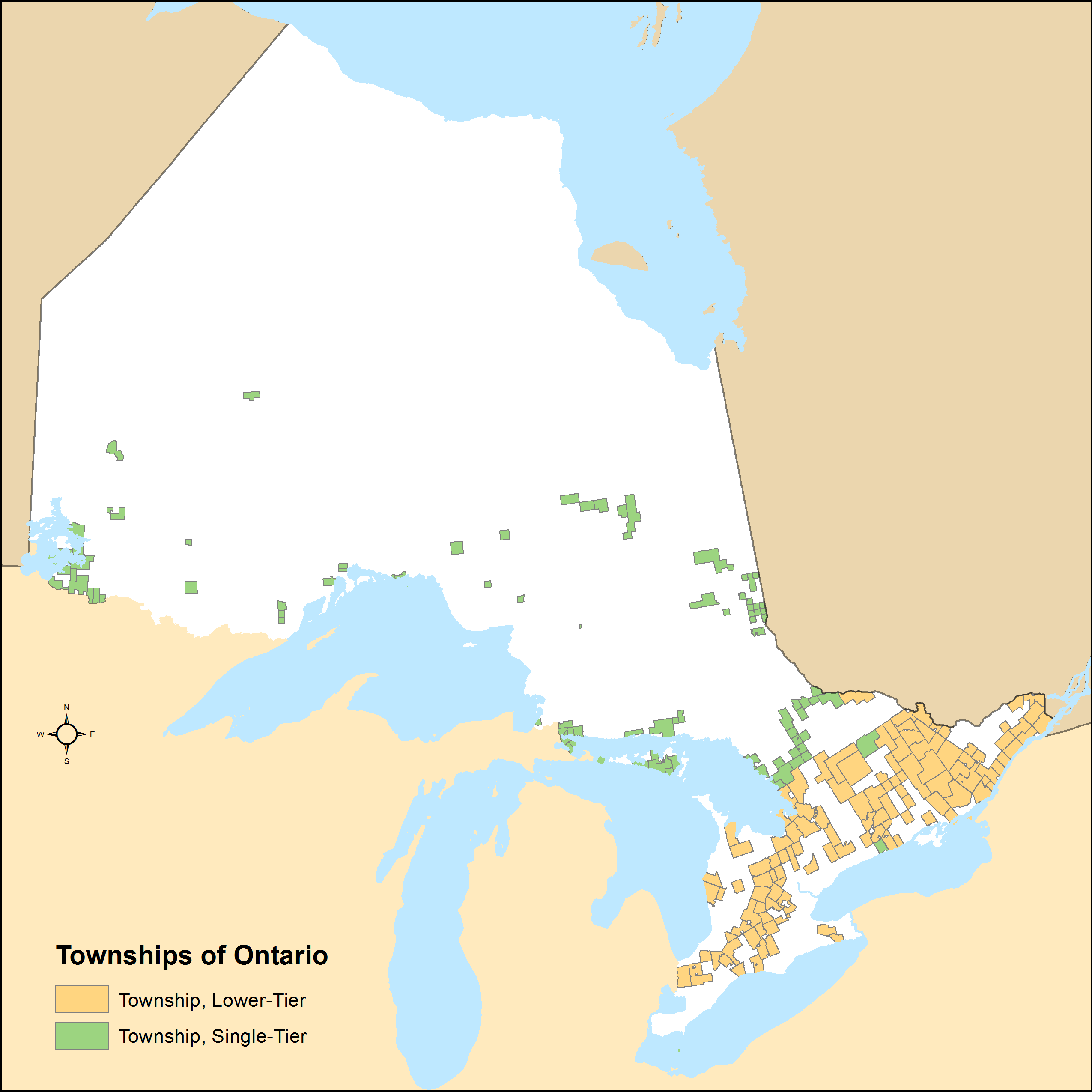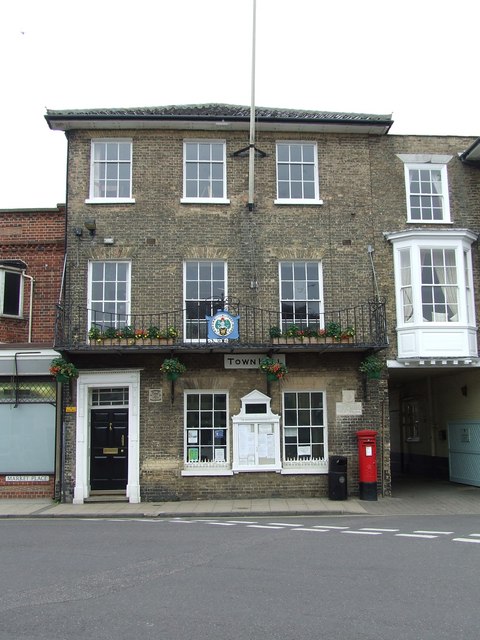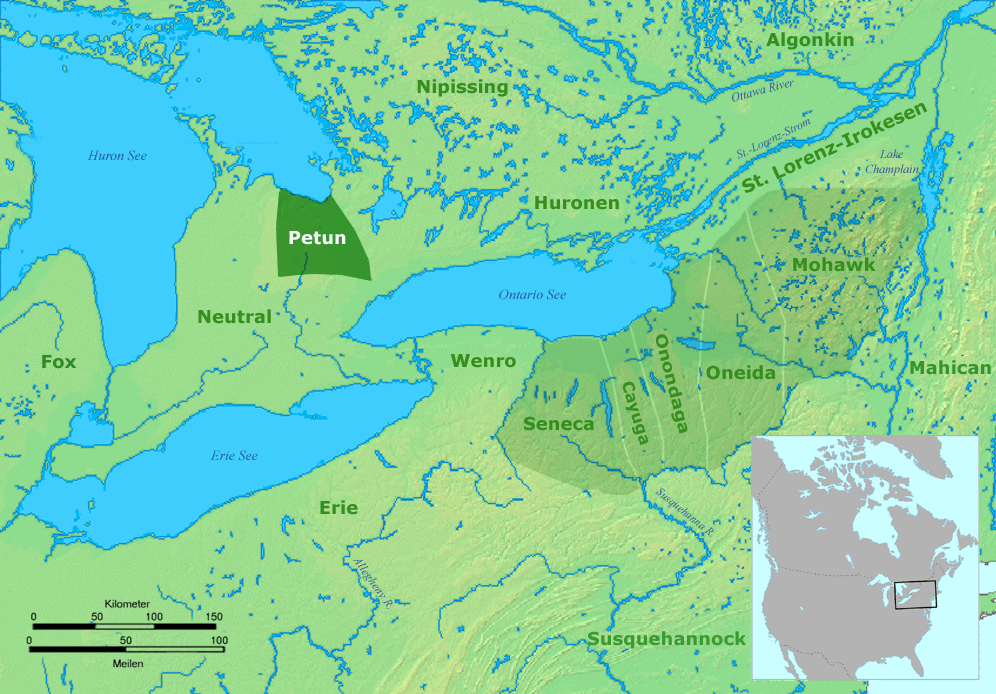|
Southwold, Ontario
Southwold is a township in Elgin County, in Ontario, Canada, located on the north shore of Lake Erie. It is a rich agricultural zone producing predominantly corn and soybeans. It is part of the London census metropolitan area. History The Southwold Earthworks is located in the township. It is an example of a pre-contact site associated with the indigenous Neutral people. The period of Neutral occupation is dated to approximately 14501550. It was designated as a National Historic Site in 1923. Southwold was named in 1792 after Southwold in Suffolk, England. The municipality was incorporated in 1852. Shedden's growth occurred when the Canada Southern Railway was built, bypassing Fingal. Later it was joined by the Pere Marquette railway, boosting Shedden's importance further still. Both railways are now defunct. Talbotville is situated at the intersection of highways 3 & 4, two of the oldest roads in the region. Economy The township is home to the Green Lane Landfil ... [...More Info...] [...Related Items...] OR: [Wikipedia] [Google] [Baidu] |
List Of Township Municipalities In Ontario
A township is a type of municipality in the Provinces and territories of Canada, Canadian province of Ontario. They can have either single-tier (not part of another higher tier government form, like a county) status or lower-tier (part of another higher tier government form, like a county) status. Ontario has 200 townships that had a cumulative population of 990,396 and an average population of 4,952 in the Canada 2011 Census, 2011 Census. Ontario's largest and smallest townships are Centre Wellington and Cockburn Island (Ontario), Cockburn Island with populations of 26,693 and 0 respectively. History Under the former ''Municipal Act, 1990'', a township was a type of local municipality. Under this former legislation, a locality with a population of 1,000 or more could have been incorporated as a township by Ontario's Municipal Board upon review of an application from 75 or more residents of the locality. It also provided that a township could include ... [...More Info...] [...Related Items...] OR: [Wikipedia] [Google] [Baidu] |
Soybeans
The soybean, soy bean, or soya bean (''Glycine max'') is a species of legume native to East Asia, widely grown for its edible bean. Soy is a staple crop, the world's most grown legume, and an important animal feed. Soy is a key source of food, useful both for its protein and oil content. Soybean oil is widely used in cooking, as well as in industry. Traditional unfermented food uses of soybeans include edamame, as well as soy milk, from which tofu and tofu skin are made. Fermented soy foods include soy sauce, fermented bean paste, nattō, and tempeh. Fat-free (defatted) soybean meal is a significant and cheap source of protein for animal feeds and many TV dinner, packaged meals. For example, soybean products, such as textured vegetable protein (TVP), are ingredients in many meat and dairy substitutes. Soy based foods are traditionally associated with East Asian cuisines, and still constitute a major part of East Asian diets, but processed soy products are increasingly used i ... [...More Info...] [...Related Items...] OR: [Wikipedia] [Google] [Baidu] |
Ontario Highway 4
King's Highway 4, also known as Highway 4, is a provincially maintained highway in the Canadian province of Ontario. Originally much longer than its present length, more than half of Highway 4 was transferred to the responsibility of local governments in 1998. It travels between Highway 3 in Talbotville Royal, north-west of St. Thomas, and Highway 8 in Clinton, passing through the city of London inbetween. Highway 4 was first designated in 1920, when a route between Talbotville Royal and Elginfield was assumed by the Department of Highways. It was extended in the early 1930s both south to Port Stanley as well as north to Flesherton. Route description Highway4 starts at an intersection with Highway3 in Talbotville Royal and continues north as a two-lane undivided highway. For most of its length, the highway bisects agricultural land. It travels along a short concurrency with Highway 401 from the community of Tempo to Wonderland Road. It encounters an interchange ... [...More Info...] [...Related Items...] OR: [Wikipedia] [Google] [Baidu] |
Ontario Highway 3
King's Highway 3, commonly referred to as Highway 3, is a provincially maintained highway in the Canadian province of Ontario which travels parallel to the northern shoreline of Lake Erie. It has three segments, the first of which travels from the Ambassador Bridge in Windsor to Highway 77 in Leamington. The second portion begins at Talbotville Royal outside of St. Thomas at Highway 4, and travels to the western city limits of Port Colborne. The road is regionally maintained within Port Colborne as Niagara Regional Road 3, but regains its provincial designation at Highway 140. Its third and final terminus is at Edgewood Park, within the Fort Erie town limits. From there, the road continues as Niagara Regional Road 3 to the Peace Bridge, where drivers can cross to the United States. The total length of Highway 3 is , consisting of from Windsor to Leamington, from Talbotville Royal to Port Colborne and from Port Colborne to Edgewood Park ... [...More Info...] [...Related Items...] OR: [Wikipedia] [Google] [Baidu] |
Pere Marquette Railway
The Pere Marquette Railway was a railroad that operated in the Great Lakes (North America), Great Lakes region of the United States and southern parts of Ontario in Canada. It had trackage in the states of Michigan, Ohio, Indiana, and the Canadian province of Ontario. Its primary connections included Buffalo, New York, Buffalo; Toledo, Ohio, Toledo; and Chicago. The company was named after Jacques Marquette, a French Jesuit missionary who founded Michigan's first European settlement, Sault Ste. Marie, Michigan, Sault Ste Marie. History The Pere Marquette was incorporated on November 1, 1899, in anticipation of a merger of three Michigan-based railroad companies that had been agreed upon by all parties. It began operations on January 1, 1900, absorbing the following companies: * Flint and Pere Marquette Railway, Flint & Pere Marquette Railroad (F&PM) * Detroit, Grand Rapids and Western Railroad, Detroit, Grand Rapids & Western Railroad (DGR&W) * Chicago and West Michigan Railw ... [...More Info...] [...Related Items...] OR: [Wikipedia] [Google] [Baidu] |
Canada Southern Railway
The Canada Southern Railway , also known as CSR, was a railway in southwestern Ontario, Canada, founded on February 28, 1868 as the Erie and Niagara Extension Railway. Its name was changed to Canada Southern Railway on December 24, 1869. The 1868 Act specified that it was to be constructed at a broad gauge of , but that requirement was repealed in the 1869 Act, thus allowing construction at the standard gauge of . The railway was leased to the Michigan Central Railroad (MCR) for 99 years in 1883; in 1929 it was subleased to the New York Central Railroad (NYC). Its successors Penn Central (formed 1968) and Conrail (formed 1976) later exercised control before being sold to Canadian National Railway/Canadian Pacific Railway in 1985. History Background The line was originally conceived by Kenyon Cox (brother of Jacob Dolson Cox, Governor of Ohio), Daniel Drew, Sidney Dillon and John F. Tracy to connect with the Wabash Railroad and establish a railway network extending from Lake E ... [...More Info...] [...Related Items...] OR: [Wikipedia] [Google] [Baidu] |
England
England is a Countries of the United Kingdom, country that is part of the United Kingdom. It is located on the island of Great Britain, of which it covers about 62%, and List of islands of England, more than 100 smaller adjacent islands. It shares Anglo-Scottish border, a land border with Scotland to the north and England–Wales border, another land border with Wales to the west, and is otherwise surrounded by the North Sea to the east, the English Channel to the south, the Celtic Sea to the south-west, and the Irish Sea to the west. Continental Europe lies to the south-east, and Ireland to the west. At the 2021 United Kingdom census, 2021 census, the population was 56,490,048. London is both List of urban areas in the United Kingdom, the largest city and the Capital city, capital. The area now called England was first inhabited by modern humans during the Upper Paleolithic. It takes its name from the Angles (tribe), Angles, a Germanic peoples, Germanic tribe who settled du ... [...More Info...] [...Related Items...] OR: [Wikipedia] [Google] [Baidu] |
Suffolk
Suffolk ( ) is a ceremonial county in the East of England and East Anglia. It is bordered by Norfolk to the north, the North Sea to the east, Essex to the south, and Cambridgeshire to the west. Ipswich is the largest settlement and the county town. The county has an area of and a population of 758,556. After Ipswich (144,957) in the south, the largest towns are Lowestoft (73,800) in the north-east and Bury St Edmunds (40,664) in the west. Suffolk contains five Non-metropolitan district, local government districts, which are part of a two-tier non-metropolitan county administered by Suffolk County Council. The Suffolk coastline, which includes parts of the Suffolk & Essex Coast & Heaths National Landscape, is a complex habitat, formed by London Clay and Crag Group, crag underlain by chalk and therefore susceptible to erosion. It contains several deep Estuary, estuaries, including those of the rivers River Blyth, Suffolk, Blyth, River Deben, Deben, River Orwell, Orwell, River S ... [...More Info...] [...Related Items...] OR: [Wikipedia] [Google] [Baidu] |
Southwold
Southwold is a seaside town and civil parish on the North Sea, in the East Suffolk District, East Suffolk district, in the county of Suffolk, England. It lies at the mouth of the River Blyth, Suffolk, River Blyth in the Suffolk Coast and Heaths Area of Outstanding Natural Beauty, south of Lowestoft, north-east of Ipswich and north-east of London, within the parliamentary constituency of Suffolk Coastal (UK Parliament constituency), Suffolk Coastal. At the 2021 Census, the population was 950. History Southwold was mentioned in ''Domesday Book'' (1086) as a fishing port, and after the "capricious River Blyth withdrew from Dunwich in 1328, bringing trade to Southwold in the 15th century", it received its town charter from Henry VII of England, Henry VII in 1489. The grant of the charter is marked by the annual Charter fair, Trinity Fair, when it is read out by the Town Clerk. Over following centuries, however, a Shingle beach, shingle bar built up across the harbour mouth, prev ... [...More Info...] [...Related Items...] OR: [Wikipedia] [Google] [Baidu] |
National Historic Sites Of Canada
National Historic Sites of Canada () are places that have been designated by the federal Minister of the Environment on the advice of the Historic Sites and Monuments Board of Canada (HSMBC), as being of national historic significance. Parks Canada, a federal agency, manages the National Historic Sites program. As of November 2023, there were 1,005 National Historic Sites, 171 of which are administered by Parks Canada; the remainder are administered or owned by other levels of government or private entities. The sites are located across all ten provinces and three territories, with two sites located in France (the Beaumont-Hamel Newfoundland Memorial and Canadian National Vimy Memorial). There are related federal designations for National Historic Events and National Historic Persons. Sites, Events and Persons are each typically marked by a federal plaque of the same style, but the markers do not indicate which designation a subject has been given. For example, the Ridea ... [...More Info...] [...Related Items...] OR: [Wikipedia] [Google] [Baidu] |
Neutral Nation
The Neutral Confederacy (also Neutral Nation, Neutral people, or ) was a tribal confederation of Iroquoian peoples. Its heartland was in the floodplain of the Grand River in what is now Ontario, Canada. At its height, its wider territory extended toward the shores of lakes Erie, Huron, and Ontario, as well as the Niagara River in the east. To the northeast were the neighbouring territories of Huronia and the Petun Country, which were inhabited by other Iroquoian confederacies from which the term Neutrals was derived. The five-nation Iroquois Confederacy was across Lake Ontario to the southeast. Like others of Iroquoian language and culture, the tribes would raid and feud with fellow Iroquoian tribes. They were generally wary of rival Algonquian-speaking peoples, such as those who inhabited Canada to the East, along the St. Lawrence Valley basin. Iroquoian tribes were later known to historians for the fierce ways in which they waged war. A largely agrarian society, the ... [...More Info...] [...Related Items...] OR: [Wikipedia] [Google] [Baidu] |
Pre-Columbian Era
In the history of the Americas, the pre-Columbian era, also known as the pre-contact era, or as the pre-Cabraline era specifically in Brazil, spans from the initial peopling of the Americas in the Upper Paleolithic to the onset of European colonization of the Americas, European colonization, which began with Christopher Columbus's voyage in 1492. This era encompasses the history of Indigenous peoples of the Americas, Indigenous cultures prior to significant European influence, which in some cases did not occur until decades or even centuries after Columbus's arrival. During the pre-Columbian era, many civilizations developed permanent settlements, cities, agricultural practices, civic and monumental architecture, major Earthworks (archaeology), earthworks, and Complex society, complex societal hierarchies. Some of these civilizations had declined by the time of the establishment of the first permanent European colonies, around the late 16th to early 17th centuries, and are know ... [...More Info...] [...Related Items...] OR: [Wikipedia] [Google] [Baidu] |








